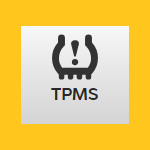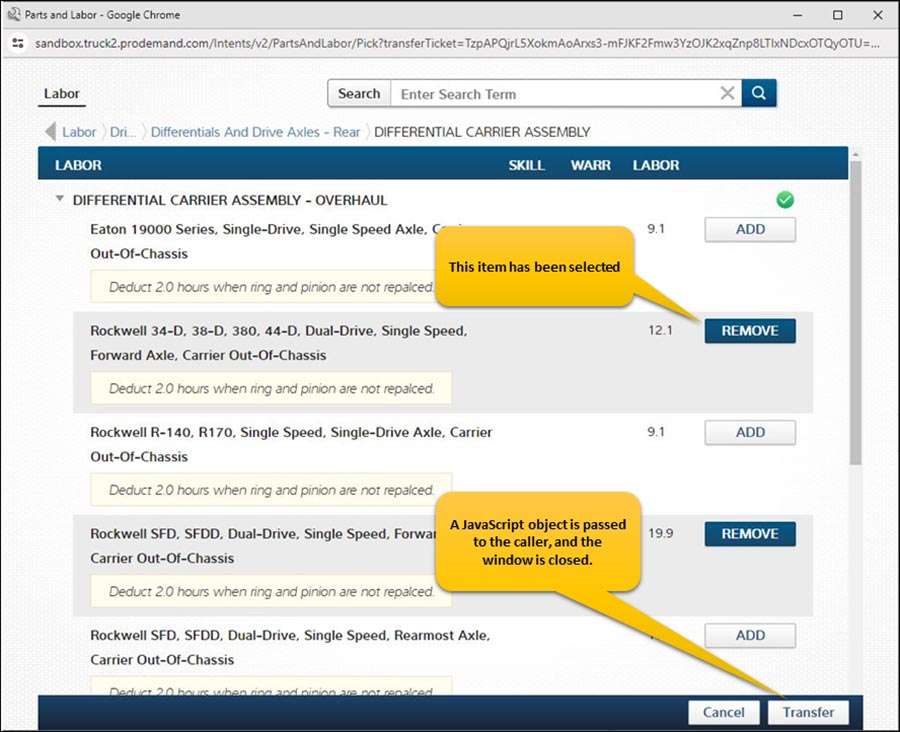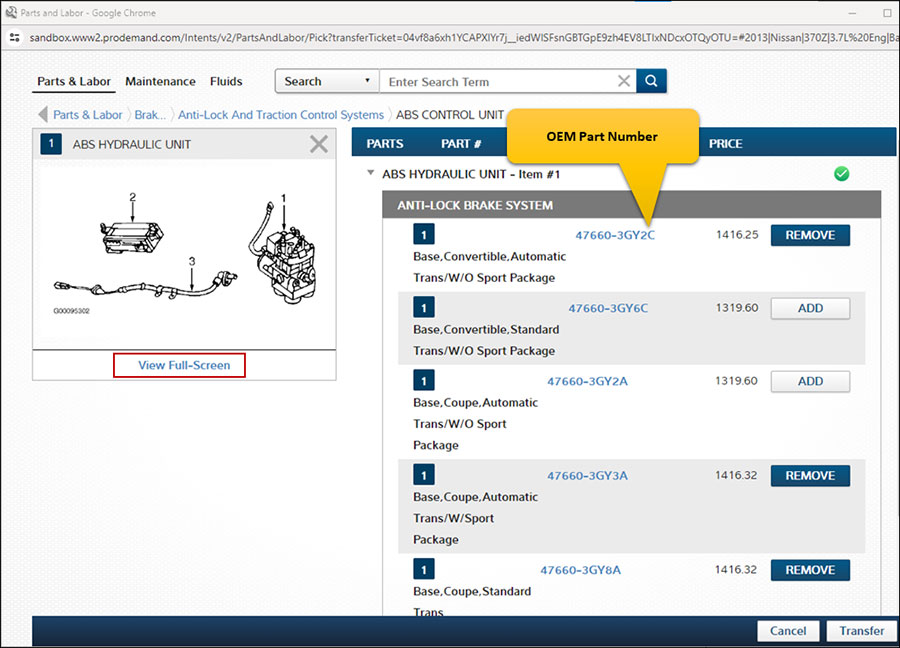 Mitchell 1 provides TPMS information to Modern Tire Dealer, an award-winning publication that writes editorial content geared to independent tire dealers. We’re sharing this content in our blog, with a link to the Modern Tire Dealer website where you can read the article in full. The TPMS information in this article may also be accessed in the reset procedures tab in our ProDemand® auto repair information software, along with other important reset procedure data for the selected vehicle.
Mitchell 1 provides TPMS information to Modern Tire Dealer, an award-winning publication that writes editorial content geared to independent tire dealers. We’re sharing this content in our blog, with a link to the Modern Tire Dealer website where you can read the article in full. The TPMS information in this article may also be accessed in the reset procedures tab in our ProDemand® auto repair information software, along with other important reset procedure data for the selected vehicle.
SUBJECT VEHICLES: Nissan Altima 2007-2013
RELEARN PROCEDURE? Yes.
SPECIAL TOOLS NEEDED? Yes — Nissan Signal Tech II scan tool or CONSULT scan tool, a Transmitter Activation Tool (J-45295), Signal Tech II Tool (J-50190).
Driving at speeds above 25 mph (40 km/h), the low tire pressure warning system on a 2007 to 2013 Nissan Altima receives the signal transmitted from the transmitter installed in each wheel, and gives alarms when the tire pressure becomes low.
A sensor-transmitter integrated with a valve (installed on each wheel) transmits a detected air pressure signal in the form of a radio wave. An antenna located in the passenger-side front pillar receives the air pressure signal transmitted by the transmitter in each wheel. The low tire pressure warning control unit reads the air pressure signal received by the antenna, and controls the warning light. It also has a judgment function to detect a system malfunction.
Tire pressure monitor warning light
When the low tire pressure warning system detects low inflation pressure or another unusual symptom, the warning light in the instrument cluster comes on. If the system detects that air pressure is less than 27 psi (190 kPa), it also will sound a buzzer for 10 seconds and a “FLAT TIRE” or “CHECK TIRE PRESSURE” warning message will appear in the instrument cluster display (if equipped). The instrument cluster display unit displays the air pressure of each tire (except the spare tire). After the ignition switch is turned on, the pressure values will not be displayed until the data of each wheel is received.
NOTE: Pressure indication in “** psi” on the screen indicates that the pressure is being measured. After a few driving trips, the pressure for all four tires will be displayed. The order of tire pressure figures displayed does not correspond with the actual order of tire position. When the tire pressure warning light comes on, immediately check the air pressure of all tires and adjust to the specified pressure. Make sure the warning light goes off. The warning light does not automatically turn off when the tire pressure is adjusted. After the tire is inflated to the recommended pressure, the vehicle must be driven at speeds above 25 mph (40 km/h) to activate the tire pressure monitoring system (TPMS) and turn off the low tire pressure warning light. If the warning light stays on or flashes, there is a malfunction in the TPMS. See appropriate manufacturer service information.
Reset procedures
NOTE: When a spare tire is mounted, or a wheel, tire pressure sensor or body control module (BCM) is replaced, the tire pressure sensor must be registered. The low tire pressure warning light does not automatically turn off when the tire pressure is adjusted. After the tire is inflated to the recommended pressure, the vehicle must be driven at speeds above 25 mph (40 km/h) to activate the TPMS and turn off the low tire pressure warning light.
Tire pressure sensor registration
NOTE: If the tire pressure sensor was replaced, the new sensor will be in an “asleep” mode. To wake up the sensor, see transmitter wake-up operation. NOTE: To register a new tire pressure sensor, a Nissan Signal Tech II scan tool or CONSULT scan tool can be used. A transmitter activation tool (J-45295) is used in wake-up procedure and can aid in registration procedure if using the CONSULT tool system. Sensor registration and wake-up methods in this article reference CONSULT-type scan tool procedures. NOTE: If a CONSULT-II is used without also using the CONSULT-II CONVERTER, a malfunction might be detected during self-diagnosis, depending on which control unit carries-out CAN communication. NOTE: The Signal Tech II Tool (J-50190) can be used to perform the following functions:
- Activate TPMS transmitters
- Display TPMS transmitter IDs
- Display tire pressure reported by the TPMS transmitter
- Read TPMS DTCs
- Register TPMS transmitter IDs
ID registration with transmitter activation tool
1) With the ignition switch in OFF position, connect CONSULT scan tool to the Data Link Connector (DLC). Turn the ignition switch to the ON position.
2) Select “START (NISSAN BASED VHCL).”
3) Touch “BCM” on the “SELECT SYSTEM” screen.
4) Select “AIR PRESSURE MONITOR” on the “SELECT WORK ITEM” screen.
5) Select “WORK SUPPORT” on the “SELECT DIAG MODE” screen, and select “ID REGIST.”
6) With the Transmitter Activation Tool (J-45295) pushed against the front left transmitter tire air valve, press the button for five seconds.
NOTE: Be sure to register the IDs in the specified order, or the self-diagnostic results display will not function properly.
7) Register the IDs in the order specified below. When ID registration of each wheel has been completed, a buzzer sounds (or a chime in 2004 models), the hazard warning lights or turn signal indicators flash twice, and the indicator light on the activation tool goes from red to green. The order is left front, right front, right rear, left rear.
8) After completing all ID registrations, press “END” to complete the procedure.
1) With the ignition switch in the OFF position, connect the CONSULT scan tool to the Data Link Connector (DLC). Turn the ignition switch to the ON position.
2) Select “START (NISSAN BASED VHCL).”
3) Touch “BCM” on the “SELECT SYSTEM” screen.
4) Select “AIR PRESSURE MONITOR” on the “SELECT WORK ITEM” screen.
5) Select “WORK SUPPORT” on the “SELECT DIAG MODE” screen, and select “ID REGIST.”
6) Adjust the tire pressure to the values specified in the appropriate Sensor ID Registration Tire Pressure Specifications table below, and drive the vehicle at 25 mph (40 km/h) or more for a few minutes.
Read more:






